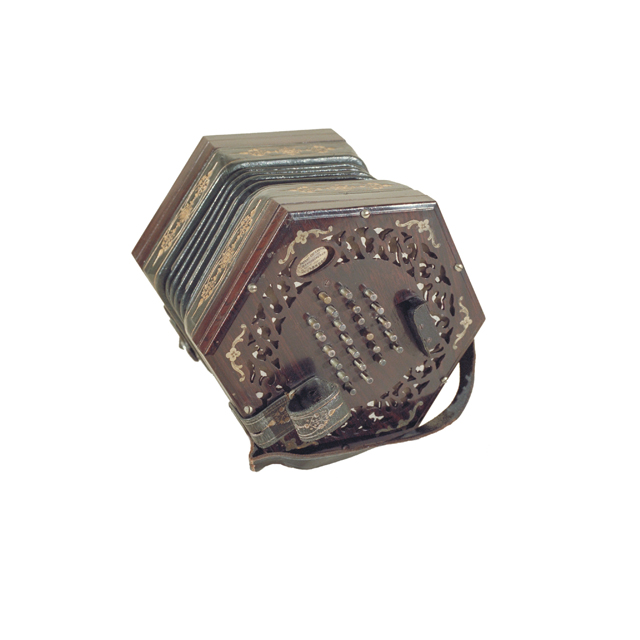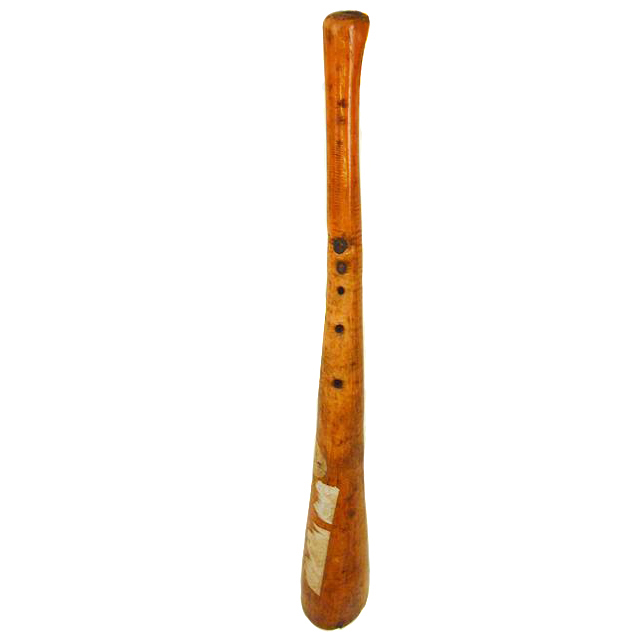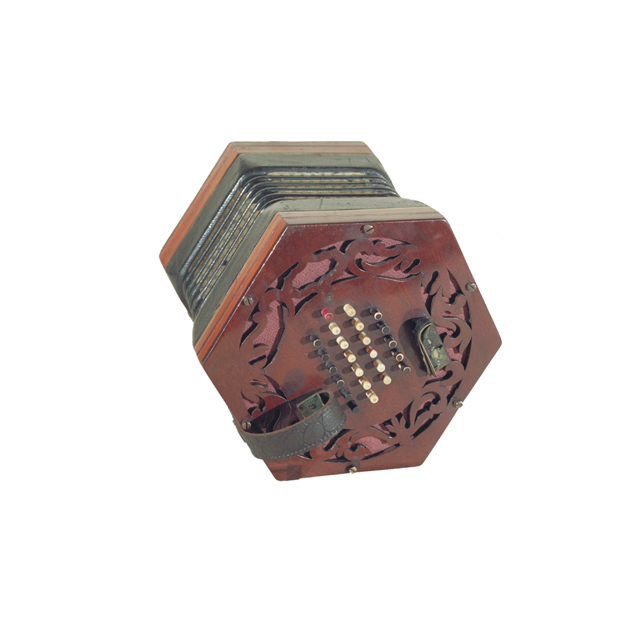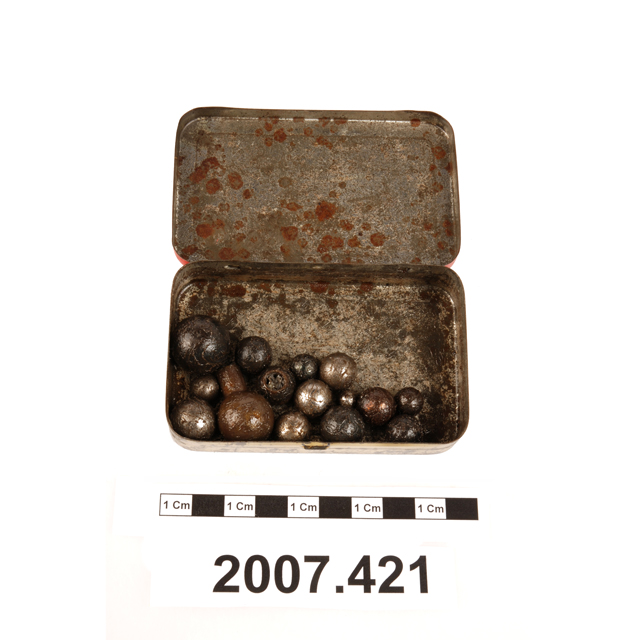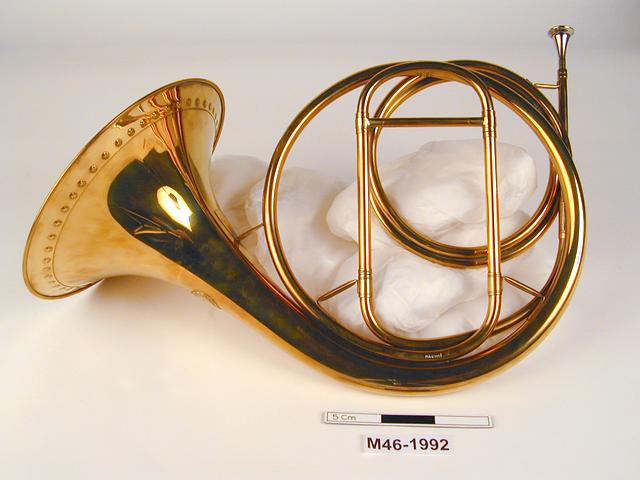
Natural horn, hand horn. Brass body, ferrules and garland. Crook for F with modern-style mouthpipe and mouthpiece receiver designed for use with a modern mouthpiece. Halstead Chidell mouthpiece, silver plated. Garland embossed with scallop shell motif. Bell throat beard plaque inscribed WEBB/LONDON. OBSERVATIONS DURING GALLERY PHOTOGRAPHY 09/08: Stays formed from brass tubes 6.5 mm diameter folded at ends and formed into outer curved shape of pipes, apart from bell stay, which is a flat triangular shape. Crook is twice looped and made from two sections joined under a simple brass ferrule. Leadpipe on crook is also a separate section. Inscriptions, mouthpiece (below rim): W/HALSTEAD.PAXMAN.CHIDELL.LONDON 22MM; Shank of crook: F; bell stay: 486.92; bell plaque: WEBB/HALSTEAD/LONDON.
This horn is a modern copy of an instrument made by Stohr in Bohemia in the early 19th century. John Webb worked with London horn player Anthony Halstead to design a range of horns for use by performers who play on period instruments. London boasts the world's most active historical performance scene. Ensembles such as the Orchestra of the Age of Enlightenment, the Academy of Ancient Music, the Hanover Band and the New Queen's Hall Orchestra perform historic music on instruments like those that the composers would have known in their lifetimes.



